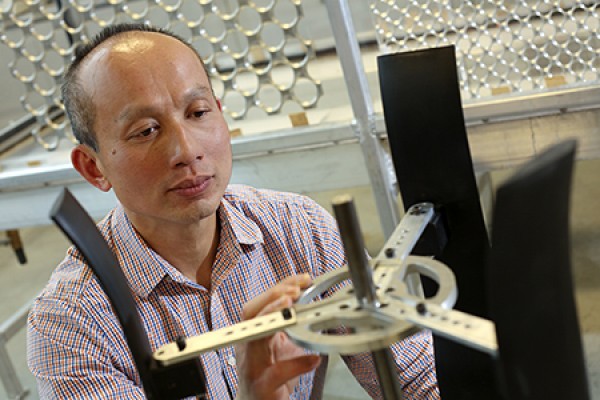 David Ting, professor of mechanical, automotive and materials engineering, at work in his Turbulence and Energy Lab at the University of Windsor.
David Ting, professor of mechanical, automotive and materials engineering, at work in his Turbulence and Energy Lab at the University of Windsor.
From car engines to golf balls, understanding turbulent flow is critical to the proper design of countless items.
Unfortunately, the complicated concept of turbulence still puzzles engineers and scientists, let alone students who are new to the subject. A University of Windsor engineering professor is hoping his new book will help students grasp the complex topic professionals are still trying to decipher.
Drawing on 25 years of research and more than 18 years in the classroom, David Ting, co-founder and co-director of the Turbulence and Energy Lab and professor of mechanical, automotive and materials engineering, said he modelled his book, Basics of Engineering Turbulence, on his interactive teaching style.
“Flow turbulence is very challenging,” Dr. Ting said. “A lot of textbooks on the subject are not user friendly and at a high level. For that reason, I felt there was a niche and I could write something to try and close that gap.”
Ting wrote the book for mechanical, civil, chemical and environmental engineers who encounter flow turbulence in their everyday practice. The text focuses on the fundamentals of turbulence for applications in engineering and industrial settings. Ting said the book is “student friendly” thanks to the addition of diagrams, schematics, figures and cartoons—most of which were produced by his former and current graduate students. More than 30 books on the subject exist globally, Ting said, however, fewer than a handful are written as introductory texts.
“While David’s turbulence publication record is impressive in its own right, I have always been more impressed by his dedication and concern for students,” Ting’s colleague, Rupp Carriveau, wrote in the book’s foreword. “More than anyone I have ever known, he is able to simplify, rearrange and relate complex matters to those lost sheep keen to join the flock of the initiated.”
Outside of the classroom, Ting and his engineering colleagues collaborate with industry on several projects ranging from improving geothermal heat extraction and using turbulence to cool photovoltaic solar panels to underwater energy storage and turbulent wind farm performance.
Basics of Engineering Turbulence will be released by the publisher, Academic Press, on March 1 and can be purchased online at Elsevier or Amazon.
